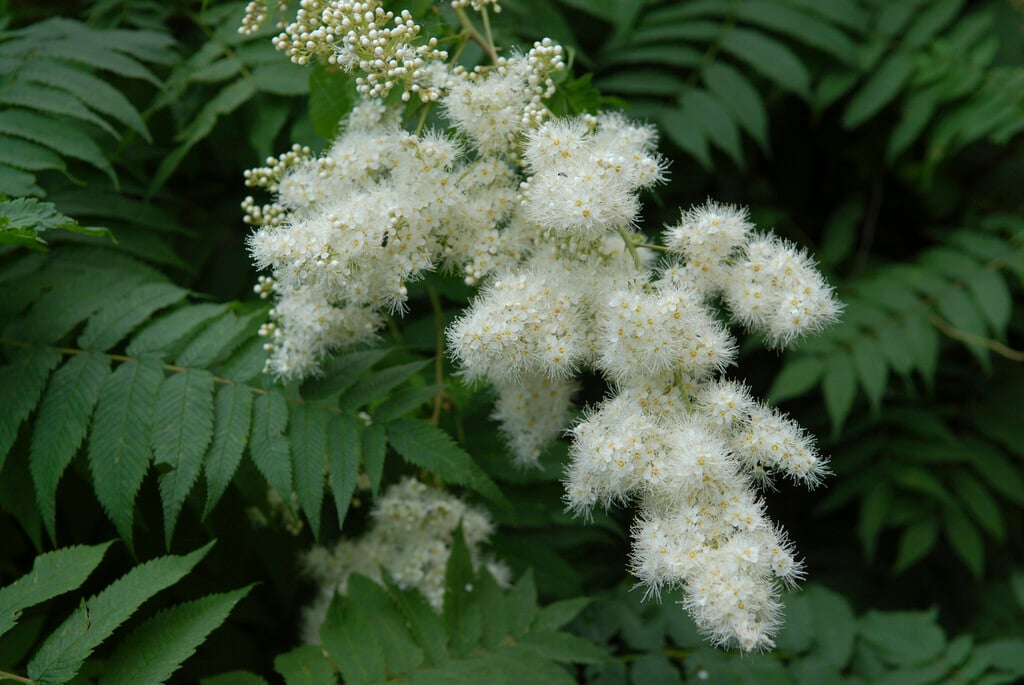Sorbaria tomentosa
A large, spreading, suckering, deciduous shrub which, in favourable conditions, can reach a height of around 6m. Dark green pinnate foliage is tapered and divided into lance-shaped leaflets. In summer, large, fluffy conical heads of small, fragrant, creamy-white flowers appear

Size
Ultimate height
4–8 metresTime to ultimate height
5–10 yearsUltimate spread
2.5–4 metresGrowing conditions
Moisture
Moist but well–drainedpH
Alkaline, NeutralColour & scent
| Stem | Flower | Foliage | Fruit | |
| Spring | Green | |||
|---|---|---|---|---|
| Summer | Cream White | Green | ||
| Autumn | Green | |||
| Winter |
Position
- Full sun
- Partial shade
Aspect
East–facing or North–facing or South–facing or West–facing
Exposure
Exposed or Sheltered Hardiness
H5Botanical details
- Family
- Rosaceae
- Native to GB / Ireland
- No
- Foliage
- Deciduous
- Habit
- Suckering
- Genus
Sorbaria are large, deciduous suckering shrubs with attractive pinnate leaves and small, white, spiraea-like flowers borne in large terminal panicles in summer
- Name status
Correct
- Plant range
- Himalaya
How to grow
Cultivation
Best grown in moderately fertile, moist but well-drained soil. Useful for waterside plantings but neglected plants can rapidly form thickets when it would have the potential to become a nuisance if not managed well
Propagation
Propagate by sowing seed in containers in a cold frame in autumn, or by semi-riope cuttings or removal of rooted suckers
Suggested planting locations and garden types
- Cottage and informal garden
- Low Maintenance
- Flower borders and beds
Pruning
Pruning group 2 or pruning group 6; sucker removal in winter
Pests
Generally pest-free
Diseases
Generally disease-free
Get involved
The Royal Horticultural Society is the UK’s leading gardening charity. We aim to enrich everyone’s life through plants, and make the UK a greener and more beautiful place.